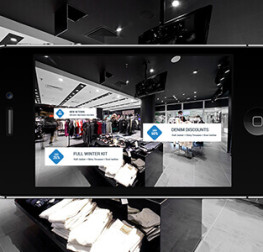How One Technology is helping Airlines Tackle Maintenance Issues
The chances of dying in a plane crash is 11,000,000:1.
As per the Aviation Safety Database, 2014 turned out to be an extremely dangerous year for the aviation industry involving as many as 80 incidents including civilian and military.
Causes of air accidents vary ranging from bad weather conditions, pilot error to improper maintenance.
Experts state that about 12% of air accidents result due to faulty maintenance.
According to maintenanceassistant.com,
Maintenance gets the blame in more than 1/3rd of the cases which involve aircraft equipment malfunctioning. What’s more, when an engine delay is encountered, it is the maintenance error which accounts for 50% of its causes.
Maintenance errors caused about 42% of fatal airline accidents from 1994 to 2004 in the United Stated alone.
Check out this interesting PDF to learn more about accidents caused by maintenance.
Aviation Maintenance – A Complex Quagmire
Maintenance personnel and inspection staff are under tremendous pressure while performing tasks and duties because of various factors involving time, efficiency, cost and much more.
Airlines have to ensure that their aircraft fleet undergoes different types of inspection checks commonly referred to as A check, B check, C check and D check. The former being the lighter ones whereas the latter are generally denser.
For instance, A check requires to be done after every 500 flight hours and needs approximately 20-50 man-hours involving an overnight check.
Engineers and Technicians have to follow a certain industry standard and constantly refer to their task cards while performing maintenance.
Since maintenance is quite stressful, here are some risks worth mentioning:
- Skipping specific passages in procedures leading to safety violations
- Technical misunderstandings relating to maintenance documentation (manuals, job cards)
- Following procedures that might not be appropriate for that moment
- Lack of IT skills to work on new generation of aircraft
- Misinterpretation of facts, lack of adequate technical training
- Improper workstations, lot of noise and inadequate lighting
Augmented Reality: A Next-Generation Approach to Solving MRO (Maintenance, Repair and Overhaul) Problems
Consider this scenario.
Joseph works as the chief supervisor with XYZ Airline and is based in New Zealand. While working, he gets a notification on his Tablet that a sensor on a passenger aircraft at a facility in Jakarta has detected a major fault. This alert is also sent to the facility in Jakarta, where Alex responds.
Now, Alex is a highly skilled technician but lacks Joseph’s experience.
With the help of a secured connection via an application, both these gentlemen have a voice discussion. Alex points his tablet’s in-built camera towards the aircraft and the 3D-viewer captures video data and image for Joseph to have a look. With the help of the location-specific information overlayed on the images shown, Joseph gives expert guidance to Alex.
The data gets analyzed super-fast. Thanks to the rendering and tracking algorithms and that too in the cloud. The data is transferred seamlessly between these two devices at distant locations consisting of the technical information. The problem is diagnosed on time and repair is done.
This is how Augmented Reality works. It allows you to superimpose digital information in the form of animation, video, audio and 3D models on real-world physical objects.
Benefits
Speed-up Decision Making
Rather than going through those bulky maintenance manuals or task cards, Augmented Reality Applications can connect technicians with experienced engineers and solve complex issues on time and within budget. It also reduces the probability of human error as everything gets sorted out in real-time. Also, advanced apps help inspectors and technicians know the exact points where repair and maintenance needs to be done.
Real-Time Updates
With Augmented Reality Applications, you can now say good-bye to paper-work and keep records electronically allowing you to make updates instantly anytime, anywhere. This even helps during future inspections.
Achieve Cost-Effectiveness
Highly qualified MRO personnel are required to carry out maintenance tasks. Moreover, airlines also need to invest in training these people to better output and efficiency. Augmented Reality Applications helps you train technicians and inspectors in a more engaging way. Rather than reading boring manuals, animated videos work better leading to improved knowledge retention. Also, when you need to connect with specialists residing in remote locations, AR apps come to your rescue and save lots of money.
Augmented Reality Glasses: A Step Further
EasyJet, the European Airline, has already stepped into the future by providing wearables like smartglasses to their engineers to inspect aircraft.
Its Engineering Team uses advanced AR Glasses to take images of faulty aircraft parts and send it back to the central engineering team in the UK to minimize delays and save costs. This also leads to better clarity on specific technical issues, irrespective of the fact that experts are sitting hundreds of miles away.
Conclusion
Aircrafts being complex pieces of machinery have to be maintained with caution. A single mistake can turn into a catastrophe within seconds. With Augmented Reality and Wearable Technology, MRO processes can be improved to a large extent. Most importantly, this will lead to improved aircraft and passenger safety.








Tags: